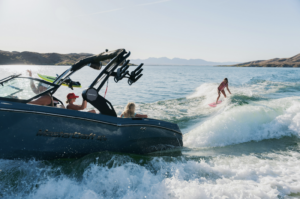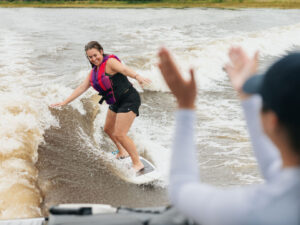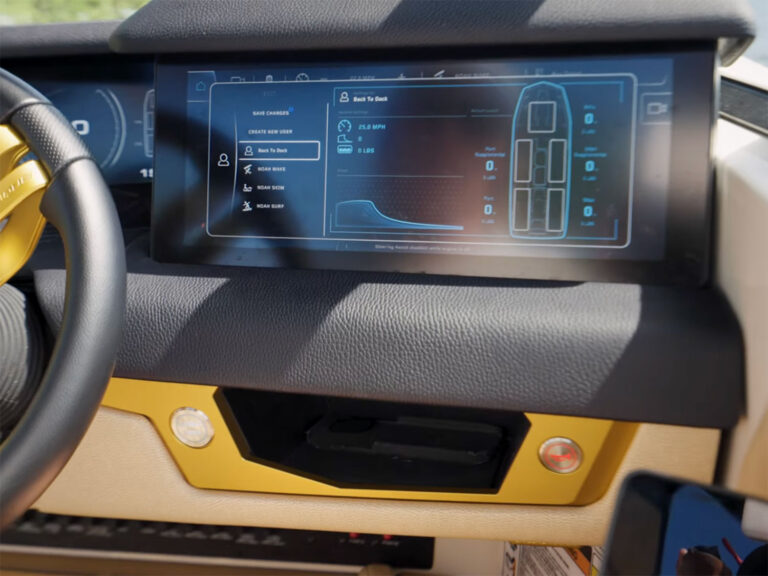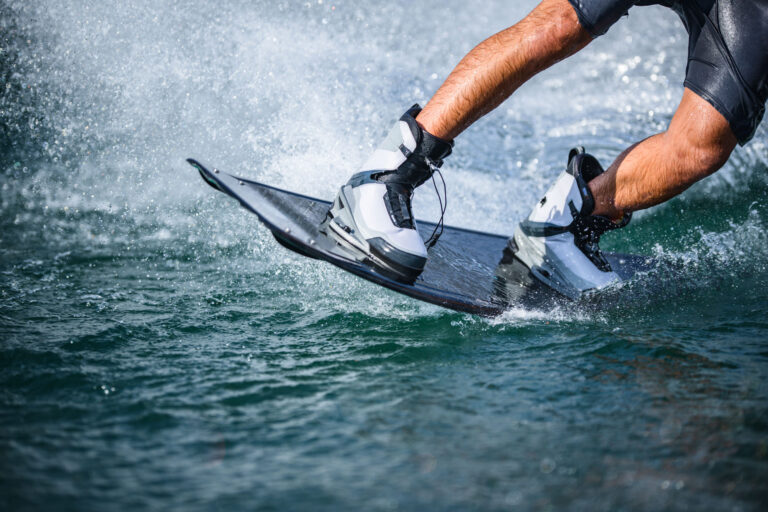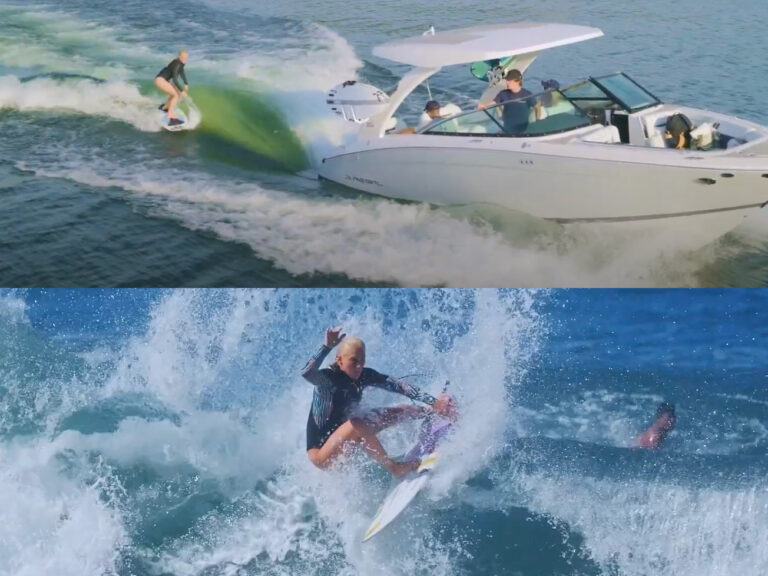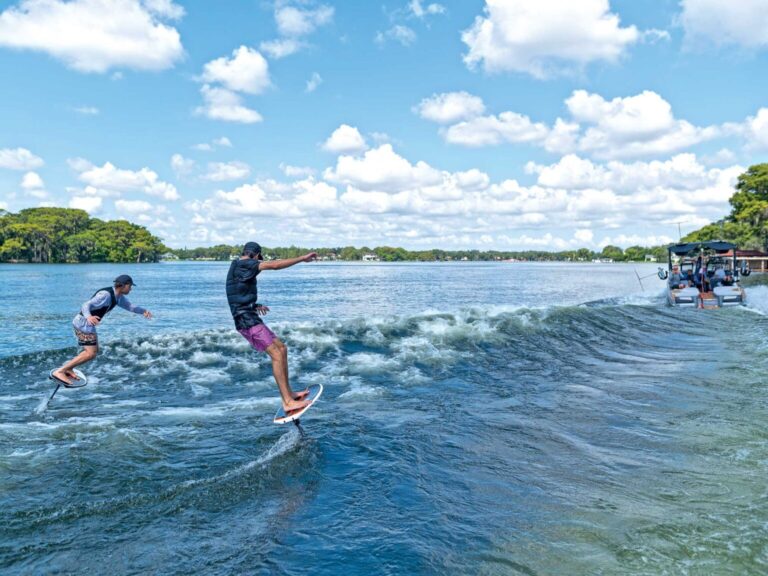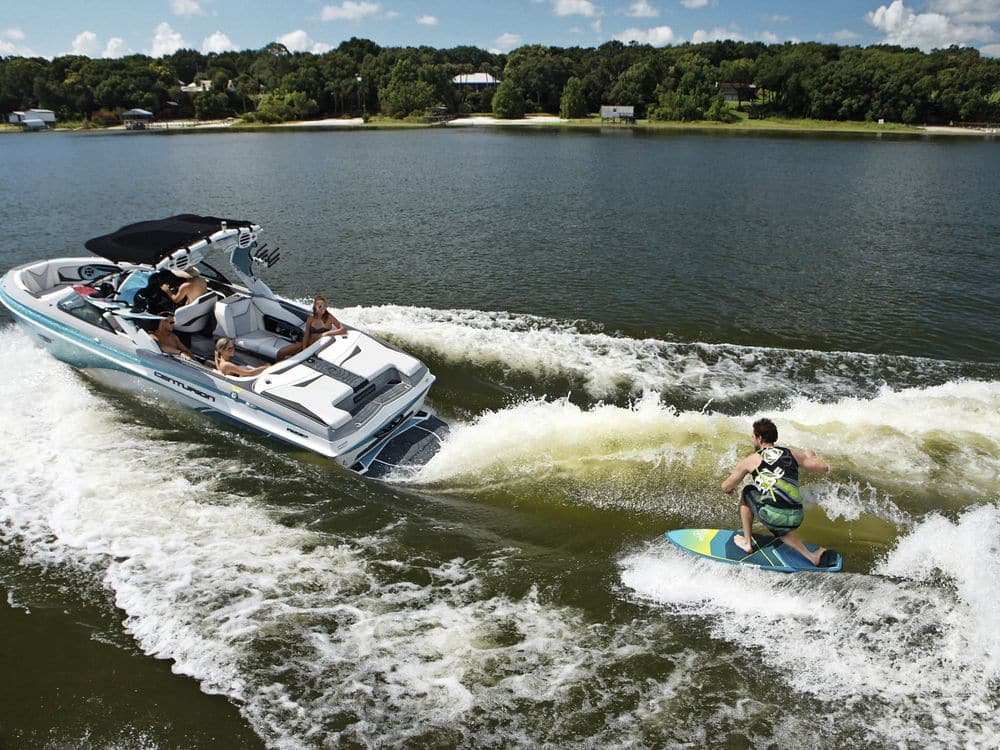
Five years ago, the Centurion Ri237’s 5,100-pound ballast system would have been the wakeboarding equivalent of science fiction. Today? Well, honestly, that 2½-ton setup is still a bit hard to fathom, but it feels at home in today’s world of gargantuan ballast systems, rather than in some distant future where a robot drives your morning session. (We’d love to see a Google boat.) Ever since Nautique kicked off the big-wake revolution with the epic displacement of the G23, the biggest trend in ballast has been big, bigger and biggest. At the time of its inception, the G23’s 2,850-pound system seemed astounding. Today that kind of weight is the new norm. In fact, virtually every major wakeboat builder offers a ballast package comparable to that number.
Weight Gains
Centurion is on the leading edge of that trend with three models that handle more than 4,500 pounds of ballast: the Ri237 (5,100), FS44 (5,050) and FS33 (4,550).
MasterCraft’s all-new X23 boasts 2,450 pounds of hard-tank ballast, complemented by 590 pounds of plumbed bags for a grand total of 3,040 pounds. Malibu’s quad hard-tank systems max out at 1,825 pounds, but the company’s Plug N Play option allows advanced riders and surfers to add two 550-pound rear sacks, taking the total ballast capacity to 2,925 pounds. Tigé’s XL ballast package totals exactly 3,000 pounds, while Supra’s Liquid Lead system maxes out at 3,200 pounds in the flagship SE. Axis doesn’t have a model that eclipses the 2,850 mark, but it has four models that break 2,500 pounds: the A24 (2,750), A22 (2,650), T22 (2,550) and T23 (2,550). The Mojo leads the Moomba line with a 2,500-pound system.
Trending Tanks
Where sacks once dominated, tanks have taken over. Virtually all of today’s wakeboat builders offer a hard-tank ballast system. Some, like Centurion and Nautique, have moved exclusively to hard tanks in their top-end boats. Others, including Axis, Malibu, MasterCraft, Supra and Tigé, employ hard-tank systems integrated with plumbed sacks. One of the biggest advantages of tanks is that they’re located below the floor, so they free up storage room and don’t crowd the seating area like bags traditionally have. Tanks also don’t have the mildew issues associated with bags, so you can spend less time cleaning your boat and more time enjoying it.
BIGGER WEIGHTS, SHORTER WAITS
So what do all these massive metrics mean for riders? The simplest answer, of course, is larger wakes and surf waves. After all, more weight equals more displacement, which equals bigger wakes and waves. The new breed of massive wakes comes at a price, however. As we wait for pump technology to catch up to today’s larger systems, riders will spend more time waiting for all that water weight to fill. Ironically, today’s largest ballast tanks are the exception to that rule, thanks to Centurion’s recently reintroduced Ramfill system. With Ramfill, Centurion says, the Ri237’s 5,100 pounds of ballast fills in about 45 seconds.


